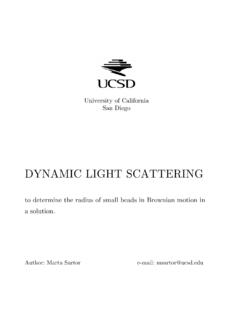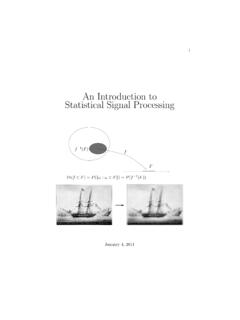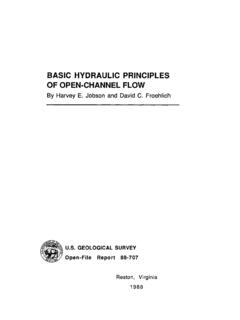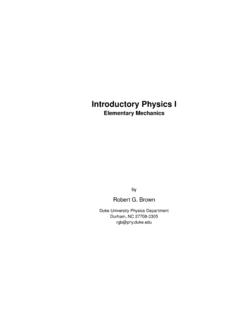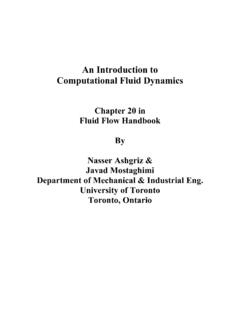Transcription of Rhythms of the Brain - University of California, San Diego
1 Rhythms of the BrainGy rgy Buzs kiOXFORD University PRESSR hythms of the BrainThis page intentionally left blank Rhythms of theBrainGy rgy Buzs ki120063 Oxford University Press, Inc., publishes works that furtherOxford University s objective of excellencein research, scholarship, and New YorkAuckland Cape Town Dar es Salaam Hong Kong KarachiKuala Lumpur Madrid Melbourne Mexico City NairobiNew Delhi Shanghai Taipei TorontoWith offices inArgentina Austria Brazil Chile Czech Republic France GreeceGuatemala Hungary Italy Japan Poland Portugal SingaporeSouth Korea Switzerland Thailand Turkey Ukraine VietnamCopyright 2006 by Oxford University Press, by Oxford University Press, Madison Avenue.
2 New York, New York is a registered trademark of Oxford University PressAll rights reserved. No part of this publication may be reproduced,stored in a retrieval system, or transmitted, in any form or by any means,electronic, mechanical, photocopying, recording, or otherwise,without the prior permission of Oxford University of Congress Cataloging-in-Publication DataBuzs ki, of the Brain / Gy rgy Buzs bibliographical references and 978-0-19-530106-9 ISBN 0-19-530106-41. Brain Physiology. 2. Oscillations. 3.
3 Biological Rhythms .[DNLM: 1. Brain physiology. 2. Cortical Periodicity. WL 300 B992r 2006] I. '2 dc222006003082987654321 Printed in the United States of Americaon acid-free paperTo my loved page intentionally left blank The short punch line of this book is that brains are foretelling devices and theirpredictive powers emerge from the various Rhythms they perpetually generate. Atthe same time, Brain activity can be tuned to become an ideal observer of the en-vironment, due to an organized systemof Rhythms .
4 The specific physiologicalfunctions of Brain Rhythms vary from the obvious to the utterly impenetrable. Asimple but persuasive example is walking. Bipedal walking is a periodic series offorward falls interrupted regularly by alternate extensions of each leg. It is almostas natural to us as breathing. This effortless exercise is made possible by the pre-dictive nature of spinal cord oscillators. On smooth terrain, the alternation of legmovements can take us any distance. Perturbation of the clocking, on the otherhand, signals a change in the terrain.
5 This general mechanism is the same in allanimals, including eight-legged scorpions and centipedes. The notion that oscilla-tors or central pattern generators 1are responsible for the coordination of motorIf the Brain were simple enough for us to understand it, we would be too sim-ple to understand it. Ken HillPrelude1. Neural circuits that produce self-sustaining patterns of behavior are called central pattern gen-erators. The most studied central pattern generator is an intraspinal network of neurons responsible forlocomotion.
6 Grillner (1985) summarizes the pros and cons of the pacemaker view of central patterngenerators in the spinal cord and Brain . Stein et al. (1997) and Burke (2001) are nice updates on thetopic. Central pattern generators are also responsible for many other types of rhythmic movements, , peristaltic motor patterns of legless animals, rhythmic movement of the wings of crickets duringsong production, respiration, heart control, movements of the stomach, and other parts of the digestivesystem. My favorite review on this topic is Marder and Calabrese (1996).
7 Patterns, such as breathing and walking, is old and well accepted in the tantalizing conjecture that neuronal oscillators can be exploited for aplethora of other Brain -generated functions, including cognition, is quite new andcontroversial. And it is the latter topic, the contribution of oscillations to the in-visible, inferred operations of the Brain , that this book is mostly the mechanisms that allow complicated things to happen in a coordi-nated fashion in the Brain has produced some of the most spectacular discoveriesof neuroscience.
8 However, I do not want to mislead you from the outset. Clocksare not thinking but ticking devices, no matter how precisely they can predicttime. Time needs to be filled with content, provided by the appropriate firing pat-terns of neurons, whose assembly activity, in turn, is regulated by Brain oscilla-tions. Interestingly, the neuronal assemblies that generate the content are oftenthe same as those that give rise to the time metric of oscillations that in turn orga-nize the cell assembly pattern. This peculiar reciprocal causation, brought aboutby the self-organized features of Brain activity, begs for an explanation.
9 A goodpart of the volume is devoted to discussing experiments that attempt to elucidatethese emerging properties of neuronal the physiological level, oscillators do a great service for the Brain : they co-ordinate or synchronize various operations within and across neuronal net-works. Syn(meaning same) and chronos(meaning time) together make sure thateveryone is up to the job and no one is left behind, the way the conductor createstemporal order among the large number of instruments in an orchestra. A closeview of Seiji Ozawa at the end of a concert, sweat falling from his face, is proofthat conducting an orchestra is a physically and mentally demanding job.
10 In con-trast, coupled oscillators perform the job of synchronization virtually feature is built into their nature. In fact, oscillators do not do much else. Theysynchronize and predict. Yet, take away these features, and our brains will nolonger work. Compromise them, and we will be treated for epilepsy, Parkinson sdisease, sleep disorders, and other rhythm-based cognitive maladies. As I pointout repeatedly in Cycles 1 13 of this volume, virtually no nervous function existswithout a time metric, be it the simplest motor or the most complex cognitive we know quite a bit about neurons, the building blocks of the Brain , andhave extensive knowledge about their connectivity, we still know very little howthe modules and systems of modules work together.









